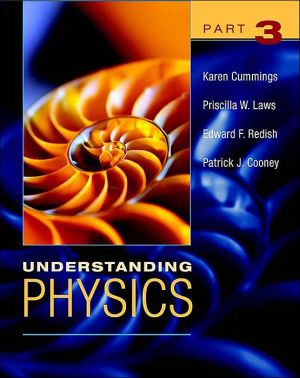

 |

|

Sold Out
Book Categories |
CHAPTER 22 Electric Charge.
22-1 The Importance of Electricity.
22-2 The Discovery of Electric Interactions.
22-3 The Concept of Charge.
22-4 Using Atomic Theory to Explain Charging.
22-5 Induction.
22-6 Conductors and Insulators.
22-7 Coulomb’s Law.
22-8 Solving Problems Using Coulomb’s Law.
22-9 Comparing Electrical and Gravitational Forces.
22-10 Many Everyday Forces Are Electrostatic.
CHAPTER 23 Electric Fields.
23-1 Implications of Strong Electric Forces.
23-2 Introduction to the Concept of a Field.
23-3 Gravitational and Electric Fields.
23-4 The Electric Field Due to a Point Charge.
23-5 The Electric Field Due to Multiple Charges.
23-6 The Electric Field Due to an Electric Dipole.
23-7 The Electric Field Due to a Ring of Charge.
23-8 Motion of Point Charges in an Electric Field.
23-9 A Dipole in an Electric Field.
23-10 Electric Field Lines.
CHAPTER 24 Gauss’ Law.
24-1 An A lternative to Coulomb’s Law.
24-2 Electric Flux.
24-3 Net Flux at a Closed Surface.
24-4 Gauss’ Law.
24-5 Symmetry in Charge Distributions.
24-6 Application of Gauss’ Law to Symmetric Charge Distributions.
24-7 Gauss’ Law and Coulomb’s Law.
24-8 A Charged Isolated Conductor.
CHAPTER 25 Electric Potential.
25-1 Introduction.
25-2 Electric Potential Energy.
25-3 Electric Potential.
25-4 Equipotential Surfaces.
25-5 Calculating Potential from an E-Field.
25-6 Potential Due to a Point Charge.
25-7 Potential and Potential Energy Due to a Group of Point Charges.
25-8 Potential Due to an Electric Dipole.
25-9 Potential Due to a Continuous Charge Distribution.
25-10 Calculating the Electric Field from the Potential.
25-11 Potential of a Charged Isolated Conductor.
CHAPTER 26 Current and Resistance.
26-1 Introduction.
26-2 Batteries and Charge Flow.
26-3 Batteries and Electric Current.
26-4 Circuit Diagrams and Meters.
26-5 Resistance and Ohm’s Law.
26-6 Resistance and Resistivity.
26-7 Power in Electric Circuits.
26-8 Current Density in a Conductor.
26-9 Resistivity and Current Density.
26-10 A Microscopic View of Current and Resistance.
26-11 Other Types of Conductors.
CHAPTER 27 Circuits.
27-1 Electric Currents and Circuits.
27-2 Current and Potential Difference in Single-Loop Circuits.
27-3 Series Resistance.
27-4 Multiloop Circuits.
27-5 Parallel Resistance.
27-6 Batteries and Energy.
27-7 Internal Resistance and Power.
CHAPTER 28 Capacitance.
28-1 The Uses of Capacitors.
28-2 Capacitance.
28-3 Calculating the Capacitance.
28-4 Capacitors in Parallel and in Series.
28-5 Energy Stored in an Electric Field.
28-6 Capacitor with a Dielectric.
28-7 Dielectrics: An Atomic View.
28-8 Dielectrics and Gauss’ Law.
28-9 RC Circuits.
CHAPTER 29 Magnetic Fields.
29-1 A New Kind of Force?
29-2 Probing Magnetic Interactions.
29-3 Defining a Magnetic Field.
29-4 Relating Magnetic Force and Field.
29-5 A Circulating Charged Particle.
29-6 Crossed Fields: Discovery of the Electron.
29-7 The Hall Effect.
29-8 Magnetic Force on a Current-Carrying Wire.
29-9 Torque on a Current Loop.
29-10 The Magnetic Dipole Moment.
29-11 The Cyclotron.
CHAPTER 30 Magnetic Fields Due to Currents.
30-1 Introduction 862
30-2 Magnetic Effects of Currents—Oersted’s Observations.
30-3 Calculating the Magnetic Field Due to a Current.
30-4 Force Between Parallel Currents.
30-5 Ampère’s Law.
30-6 Solenoids and Toroids.
30-7 A Current-Carrying Coil as a Magnetic Dipole.
CHAPTER 31 Induction and Maxwell’s Equations.
31-1 Introduction.
31-2 Induction by Motion in a Magnetic Field.
31-3 Induction by a Changing Magnetic Field.
31-4 Faraday’s Law.
31-5 Lenz’s Law.
31-6 Induction and Energy Transfers.
31-7 Induced Electric Fields.
31-8 Induced Magnetic Fields.
31-9 Displacement Current.
31-10 Gauss’ Law for Magnetic Fields.
31-11 Maxwell’s Equations in a Vacuum.
CHAPTER 32 Inductors and Magnetic Materials.
32-1 Introduction.
32-2 Self-Inductance.
32-3 Mutual Induction.
32-4 RL Circuits (with Ideal Inductors).
32-5 Inductors,Transformers, and Electric Power.
32-6 Magnetic Materials—An Introduction.
32-7 Ferromagnetism.
32-8 Other Magnetic Materials.
32-9 The Earth’s Magnetism.
CHAPTER 33 Electromagnetic Oscillations and Alternating Current.
33-1 Advantages of Alternating Current.
33-2 Energy Stored in a -Field.
33-3 Energy Density of a -Field.
33-4 LC Oscillations, Qualitatively.
33-5 The Electrical–Mechanical Analogy.
33-6 LC Oscillations, Quantitatively.
33-7 Damped Oscillations in an RLC Circuit.
33-8 More About Alternating Current.
33-9 Forced Oscillations.
33-10 Representing Oscillations with Phasors: Three Simple Circuits.
33-11 The Series RLC Circuit.
33-12 Power in Alternating-Current Circuits.
Appendix A: The International System of Units.
Appendix B: Some Fundamental Constants of Physics.
Appendix C: Some Astronomical Data.
Appendix D: Conversion Factors.
Appendix E: Mathematical Formulas.
Appendix F: Properties of Common Elements.
Appendix G: Periodic Tables of the Elements.
Answers to Reading Exercises and Odd-Numbered Problems.
Photo Credits.
Index.
Login|Complaints|Blog|Games|Digital Media|Souls|Obituary|Contact Us|FAQ
CAN'T FIND WHAT YOU'RE LOOKING FOR? CLICK HERE!!! X
 You must be logged in to add to WishlistX
 This item is in your Wish ListX
 This item is in your CollectionUnderstanding Physics, Part Three, Vol. 3
X
 This Item is in Your InventoryUnderstanding Physics, Part Three, Vol. 3
X
 You must be logged in to review the productsX
 X
 X

Add Understanding Physics, Part Three, Vol. 3, Understanding Physics is designed to work with learning strategies such as microcomputer-based labs and interactive lectures that are increasingly being used in physics instruction. In doing so, it incorporates new approaches based upon Physics Edu, Understanding Physics, Part Three, Vol. 3 to the inventory that you are selling on WonderClubX
 X

Add Understanding Physics, Part Three, Vol. 3, Understanding Physics is designed to work with learning strategies such as microcomputer-based labs and interactive lectures that are increasingly being used in physics instruction. In doing so, it incorporates new approaches based upon Physics Edu, Understanding Physics, Part Three, Vol. 3 to your collection on WonderClub |